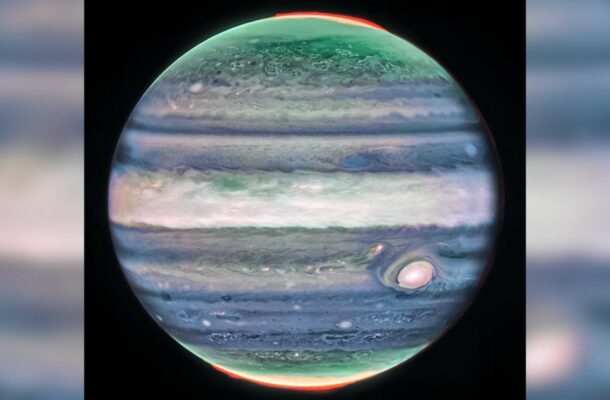NASA's James Webb Space Telescope unveils a groundbreaking revelation in Jupiter's atmosphere. Learn about the spectacular findings and the advanced technology that enabled the discovery, all detailed in this comprehensive report.
Introduction: A Glimpse into Jupiter's Enigmatic Atmosphere
NASA's latest breakthrough in space exploration has unveiled a fascinating revelation in the atmospheric landscape of the gas giant, Jupiter. Utilizing the cutting-edge capabilities of the James Webb Space Telescope, researchers have unearthed a remarkable feature within the intricate layers of Jupiter's colossal atmosphere. Through the application of advanced infrared imaging technology, the space telescope has offered a glimpse into the previously unseen facets of this enigmatic planet, shedding light on an intriguing aspect that has left the scientific community awe-inspired.
Harnessing the Power of Infrared Imaging
The revolutionary discovery was made possible through the employment of the Near Infrared Camera (NIRCam) aboard the James Webb Space Telescope. Leveraging the capabilities of this sophisticated infrared camera, researchers captured a sequence of images of Jupiter over a span of ten hours, utilizing four distinct filters to discern subtle alterations within the planet's atmospheric dynamics. The innovative utilization of infrared light, imperceptible to the human eye, has proven instrumental in unraveling the intricate nuances of Jupiter's atmospheric composition, unraveling layers of complexity previously concealed from our view.
Unforeseen Transformations Unveiled
Led by the eminent physicist, Ricardo Hueso, the research team from the University of Bilbao was astounded by the discovery of distinct features within Jupiter's atmospheric veil that had hitherto remained unnoticed. Contrary to the conventional perception of haze enveloping the planet, the recent findings have illuminated sharp and discernible characteristics that dynamically evolve in sync with Jupiter's rapid rotation. The newfound clarity in the atmospheric patterns has revealed a realm of detail previously inaccessible, opening doors to an enhanced understanding of Jupiter's intricate atmospheric dynamics and its complex interplay of elemental compositions.
Jupiter: A Celestial Wonder of Unprecedented Magnitude
As the largest planet in our solar system, Jupiter's awe-inspiring dimensions and compelling atmospheric phenomena continue to captivate the scientific community and stargazers alike. Boasting a mass approximately 320 times that of Earth, Jupiter stands as a testament to the grandeur of celestial wonders that populate our cosmic neighborhood. While the Great Red Spot remains a prominent and striking feature, NASA's recent discovery underscores the complexity and dynamism of Jupiter's atmospheric tapestry, inviting further exploration and analysis to unravel the mysteries that shroud this magnificent gas giant.
Pioneering the Path to New Frontiers
NASA's groundbreaking discovery serves as a testament to the boundless potential of modern space exploration and the instrumental role played by advanced technologies in unraveling the mysteries of the cosmos. The recent findings not only contribute to our understanding of Jupiter's atmospheric dynamics but also signify a significant leap forward in our quest to comprehend the intricate complexities of the universe. As NASA continues to push the boundaries of scientific exploration, the discoveries made through the James Webb Space Telescope serve as a beacon of hope, igniting the pursuit of new frontiers and unraveling the enigmas that have long eluded our grasp.


Comments